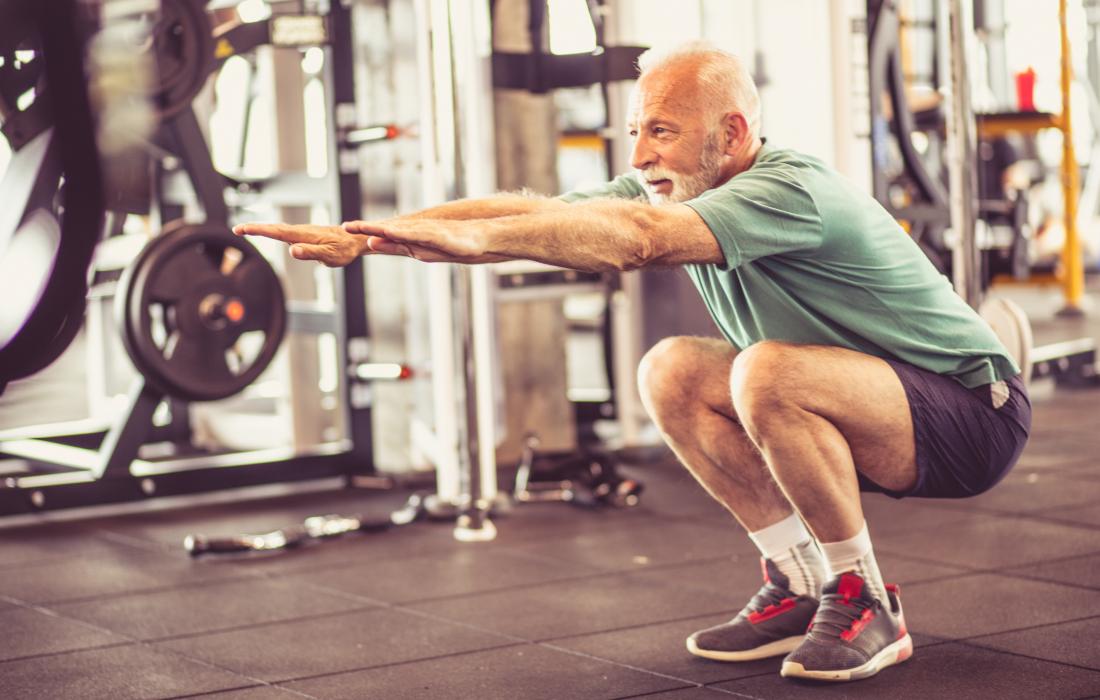The American College of Sports Medicine (ACSM) define aerobic exercise as any activity that uses large muscle groups, is possible to maintain continuously, and is rhythmic.
Cardiovascular exercise (cardio) is a form of aerobic activity. It increases breathing rate, burns calories quickly, and improves overall endurance. Examples of aerobic exercise include cycling, dancing, jogging, and swimming.
The ACSM define anaerobic exercise as intense physical activity of short duration, which uses fuel from energy sources within the contracting muscles rather than relying on inhaled oxygen. Lifting weights and sprinting are both examples of anaerobic exercise.
Strength training, including weightlifting, helps people gain muscle, which speeds up metabolism and burns more fat in the long term.
How long do the effects last?

Cardiovascular exercise has a more lasting effect than weightlifting.
Cardio generally has a less prolonged aftereffect than lifting weights.
In many studies, experts use “excess post-exercise oxygen consumption” (EPOC) to measure this effect.
For example, the researchers working on a 2014 study used it to measure the positive effects of cardio on men with metabolic syndrome. EPOC refers to the amount of oxygen that the body requires to return to its pre-exercise or resting state.
Lifting weights usually leads to higher EPOC levels than cardio, resulting in more significant muscle breakdown. This means that the body continues to burn calories even after completing a weightlifting workout.
A 2018 study looking at the effect of resistance training in sedentary adult women found that this activity, which includes weightlifting, elevated the participants’ overall basal metabolic rate (BMR) for up to 48 hours. The BMR is the number of calories that the body burns at rest.
Which anaerobic exercises burn the most calories?
The Centers for Disease Control and Prevention (CDC) recommend the following high-intensity anaerobic exercises to burn calories effectively:
- jogging or sprinting
- competitive sports, such as football, basketball, and soccer
- jumping rope
- inline skating or rollerblading at a fast speed
- cross-country skiing
- swimming laps
Calculating the calories that weightlifting burns
Online calculators can help a person establish how many calories they burn, taking their weight and physical activity of choice into account.
For example, the Calorie Burn Rate Calculator outlines various calorie burn counts depending on body weight and the type and intensity of physical activity.
Similarly, the Omni Calculator uses the activity type and duration to estimate the total number of calories that a person burns. It also helps predict how much weight a person can expect to lose.
Another useful calorie calculator is Cornell University’s METS to Calories Calculator. The term MET refers to “Metabolic Equivalent of Task,” or metabolic equivalent. This calculator works out the number of calories that a person burns by assessing their body weight, activity level (METS), and the duration of the physical activity.
Making the most of your exercise program

Stretching before and after exercising can help prevent muscle strain.
Regardless of the chosen form of exercise, people can use the following safety tips to help make sure that they maximize the effectiveness of their workout:
- Take 5 to 10 minutes to warm up and cool down by doing stretches.
- Make gradual increases in physical activity, especially if not very physically active.
- Rest between strenuous workouts, and do not exercise too much if feeling faint or ill.
- Do not rush to lift heavy weights. Correct form and strength building takes time, so start with light weights to master the techniques.
- Do not do any high-intensity exercise in hot, humid conditions as this can lead to severe dehydration.
- Stop exercising if signs of overheating occur, such as a headache, dizziness, nausea, cramps, or heart palpitations.
- Wear clothes and shoes that are suitable for the type of physical activity.
Takeaway
Both cardio and weightlifting exercises have advantages and disadvantages, and their benefits and effects vary between people.
Evidence shows that lifting weights burns more fat and has more promising long-term results. However, the type of exercise that is better ultimately depends on a person’s goals, physical fitness, and capabilities.
Most experts recommend a combination of the two for overall health and fitness.
See also
